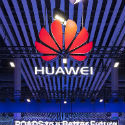
No wonder some of Europe's biggest telco groups, including Germany's Deutsche Telekom and the UK's Vodafone, have thrown such an epic tantrum about a possible ban on Huawei.
Between 2008 and 2020, when Europe's operators were building out their 4G networks, Chinese vendors took more than half the business on offer, according to a new study by Strand Consult that provides one of the most detailed breakdowns yet of individual operators and their exposure to Huawei and ZTE.
By offering low-cost deals and competitive products, the Chinese firms managed to replace Europe's Ericsson and Nokia in dozens of networks across the region. Huawei today controls about 45% of the market for 4G radio access network (RAN) products, according to the report, with ZTE taking a 7% share.
That shift happened despite mounting international concern about the security threat posed by Chinese vendors. In 2012, a US government report warned the country's main service providers off using Chinese products because of that risk.
Regardless of the concern, as well as an emerging worry about overreliance on particular vendors, several national incumbents in Europe struck single-supplier deals with Huawei for their 4G RAN products, including Belgium's Proximus, Denmark's TDC and Switzerland's Sunrise.
TDC's deal with Huawei is one that faced "significant political opposition," said the authors of Strand Consult's report, and the operator last year switched to Ericsson when signing a 5G contract that will entail the replacement of Huawei's 4G equipment.
In total, 16 of 43 operator groups across the region bought all their 4G RAN equipment from Chinese vendors, according to the study.
Of the region's big multinationals, Deutsche Telekom and Vodafone look the most dependent on Huawei and ZTE. Roughly 57% of Deutsche Telekom's 4G RAN equipment in Europe comes from the Chinese, while Vodafone's network is about 62% Chinese, according to the Strand Consult report.
However, Vodafone is 100% reliant on Huawei in the six markets of the Czech Republic, Greece, Hungary, Malta, the Republic of Cyprus and Romania, says the study.
"No operators have been forced to buy Chinese equipment and the discussion about the Chinese had been there for years," says John Strand, the CEO of Strand Consult. "When Vodafone made a decision to use only Chinese RAN in six of their countries, they made a calculated decision where they knew the risk."
Vodafone's UK subsidiary believed it could mitigate any risk by excluding Chinese vendors from the sensitive "core," the control center of the network, and using Huawei as a RAN vendor only. But it did not exercise the same judgement in other European markets, where recent political pressure has forced it to commit €200 million (US$225 million) to phasing Huawei out of its core network systems.
This demarcation between RAN and core makes little sense in 5G networks because these allow intelligent functions to be hosted in different domains, according to other experts. They include Arun Bansal, the head of Ericsson's business in Europe and Latin America.
Operators have been worried that an anti-Huawei campaign launched by the Trump administration could force them to jettison Huawei at exorbitant cost. Besides urging European governments to ban Chinese vendors, the US is trying to choke off the supply of vital components to Huawei through trade sanctions.
Want to know more about 5G? Check out our dedicated 5G content channel here on Light Reading.
Telco executives say a 5G ban would necessitate the replacement of 4G equipment as well, to avoid interoperability problems between different vendors.
Strand, an outspoken critic of the Chinese vendors, has repeatedly downplayed estimates that a Huawei swap-out would cost many billions of dollars and hold up Europe's 5G deployment.
"The cost of ripping and replacing is very small because they would need to replace this equipment anyway," he says.
His rationale is that between 70% and 80% of RAN infrastructure in Europe needs replacing with the move to 5G – regardless of any diktats about Huawei – because it is more than three years old and therefore cannot be upgraded.
In the last three years, Europe's operators have spent just $8.75 billion on RAN equipment, including about $3.5 billion on Huawei and ZTE. "The cost is equal to a 'one-time cost' of $7 or €6.5 per mobile subscriber," says Strand Consult's report.
However, if implemented in full, recent US trade sanctions aimed at Huawei could force operators in various international markets to switch vendors in a very short timeframe, according to Stefan Pongratz, an analyst at market-research firm Dell'Oro Group.
"The operators would need to do something they have never done before – they would need to complete nationwide swap-outs in months (or a year) vs. years (assuming inventory to support 4G and 5G is around one year and one to two years respectively)," he wrote in an email sent to Light Reading and other publications.
Pongratz said the RAN is just "one piece of the puzzle" and that service providers would also have to remove transport, core and fixed-line assets if the US sanctions came into effect. "European and US operators are working under the assumption that it will take three to four years to fade out Huawei," he said.
Related posts:
— Iain Morris, International Editor, Light Reading
About the Author(s)
You May Also Like











